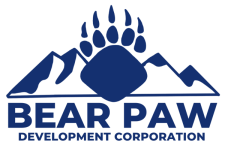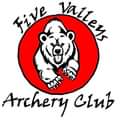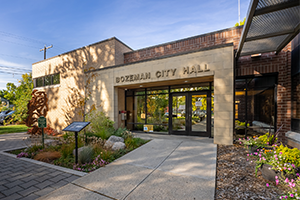News
A Planning Checklist for Your Next Community Centennial, L.A. County’s city of tomorrow, incorporates 33 ‘strategies and guidelines’ for creating better communities.
MATR Sponsor (view all)
With 23,000 homes on 11,000 acres, Centennial in northeast Los Angeles County will be far bigger than any community where most builders will ever buy lots, let alone plan. But today, with more builders than ever developing small communities to control lots and land, there are lessons to be learned from this giant on-the-boards project.
Patrick L. O’Toole, Senior Editor HousingZone.com
The "strategies and guidelines for developing communities of the 21st century" come from Newport Beach, Calif.-based consultant John T. Martin, an industry development and marketing expert who is guiding Centennial’s development team. A joint venture of Pardee Homes, Lewis Investment Corp. and Standard Pacific Corp., Centennial Founders LLC expects to launch a 25-year build-out in 2006. For now, the job of planning each part of the massive master plan is the responsibility of Randy Jackson, president of The Planning Center in Costa Mesa, Calif. He and Martin provided the details of how each "strategy and guideline" is planned for in Centennial.
Market Knowledge and Strategy
# Market-driven strategic planning and positioning. Fifteen product types will be available from the day Centennial opens to make it particularly responsive to the market.
# Market segmentation and product diversification. From apartments to estate housing, the Centennial product list is diverse: clusters, live/work units, duplexes, townhomes, two-packs and small, alley-loaded single-family, among others. Each small neighborhood will serve many niches to enhance product diversification.
# Absorption and market share. With overlapping product segments available at all times, product types won’t get absorbed out. One benefit: Buyers will be able to move up through product types when they are ready, not on the developer’s time line for building a product type.
# Land and net present value optimization. Flexibility is key. Centennial managers will be able to switch out product types quickly or bring in new ones at any time to optimize demand. This maximizes land value.
# Lifestyle and life-stage targeting. Twelve villages will target different lifestyles: urban, rural, golf, water and education, among others. Within each village, housing choices will be available for each life stage. A young family can choose a golf lifestyle and move up within that same village.
# Critical-mass marketing and merchandising. On opening day, six builders will be showing products in 15 markets.
Placemaking
# Community/village/neighborhood framework and hierarchy. At 30 to 40 homes, the neighborhood will be the smallest community unit at Centennial. Greenways and spine roads will link each neighborhood, providing a larger hierarchy into subdistricts. Four subdistricts will form a village.
# Village/amenity-focused planning and phasing. Each village’s key amenity will work for the larger community. The lake village, the education village, the golf village, etc., will share amenities designed for all Centennial residents.
# Environmental sensitivity, sustainable development and smart growth. Centennial’s plan has more than 50% open space and natural landscape. Many of the natural riparian zones will be reintroduced after decades of grazing on former Tejon Ranch land. This will re-establish the natural landscapes and the drainage ways. Areas of high density will be mixed among open space.
# Sense of place, gathering places and walkability. Each village will have a meeting place built into a focal point. The planned lake village will have a plaza overlooking a lake. From that spot it will be a quarter-mile walk to 70% of the development. Centennial has plotted walking times through neighborhoods to make sure people can get most places on foot.
# Visually enhanced and aesthetically pleasing environments/Vitruvius. Vitruvius, a great Roman builder, is famous for saying that all development should have three things: great value, firmness (made well) and romance. Centennial will achieve these through a range of product, the quality of the land plan and the green building program, as well as through numerous plaza and focal points, Jackson says.
# Neighborhood diversity: a New Urbanism/suburban eclectic. Centennial will lay out a grid pattern in some village centers and respond to the contours of natural landforms in others. The lake village will have a grid pattern in the town center that steps out to the Palisades, a cluster of rural-feeling neighborhoods.
# Blend of the natural and man-made environments. With mountains behind it, Centennial will allow water runoff to pass through the community via natural paseos. Man-made elements include plazas and open spaces that embrace these areas as well as the natural views.
# Integration of complementary land uses and transportation. An open corridor will be set aside along major arteries for an eventual light-rail line. Bus rapid transit will be built into the community from the beginning. Neighborhood electric vehicles will have their own right-of-ways.
Weaving a Social Fabric
# Health and wellness. Centennial will have health facilities, but it also has a detailed plan for recreational infrastructure with complementary programming.
# Education and lifelong learning. Teachers at a junior college anchoring the education village will have to offer educational programming for all community residents.
# Social infrastructure and soft programming. The plan calls for a community staff that will create linkages throughout Centennial via an intranet and other means.
# Information and telecommunications technology. All homes will be pre-wired, and a fiber-optic network will tie homes to Centennial’s job centers.
# Community governance. Centennial ultimately is expected to become a city. Builders and home buyers will be able to participate in governance. A council program will link to the county board of supervisors.
# Safety and security. Centennial is designed so neighborhoods won’t have walls and most homes will face streets. Residents will become the eyes and ears of the community.
# Cultural diversity, religious choice and the arts. Sites for religious, cultural and civic institutions will be set aside within each village as well as sites for libraries, meeting halls, fire stations, etc.
# Affordable housing. In addition to the mandate of 15% of very low and low below-market-rate housing units, Centennial’s developers have a goal of providing 40% of its housing within moderate price ranges. These will be affordable market-rate homes without any programs.
# Economic development, jobs/housing balance and employment. The plan calls for 1.3 jobs per home. Several business campuses will be located close to homes.
# Economic viability for all stakeholders. A full range of housing will allow residents to move up or down. Five percent of the units will be live/work. Sites for business incubators are planned as well.
# Choices for quality-of-life enrichment. This involves offering access to social, educational, cultural and civic programs. Centennial’s plan details numerous access points to enrichment activities.
A Compelling Vision
# A vision, visionary leadership and a sense of purpose. Centennial’s broad vision "of building a new town that fits entirely within its natural environment and provides a balance of housing and jobs" infuses the development process with purpose, says Jackson. "And that starts with great commitment to that vision from the top."
# Community life-cycle plan and strategy. Centennial’s plan goes to great lengths to ensure that all buyer segments can find housing to meet every life stage as part of the strategy to create continuity and community.
# Vision presentations, design guidelines and development codes. A written framework is frequently shared and explains how the Centennial vision is put into action. Each village has a distinctive set of design guidelines in keeping with a designated lifestyle program.
# Shared vision of strategic alliance partners and organizational effectiveness. Builders and buyers will be educated about the function of the natural greenways as well as green building practices.
# Consumer and customer orientation. This keeps developers and builders aligned on how to serve target buyer groups. Example: Builder partners will benefit from all home buyer research from the outset.
# Developer/builder relationships and land transactions. Instead of shopping "mega-pads" to builders, Centennial takes it down to the lot level in designing the packages it offers builders. This helps the vision and gives the builder the opportunity to take down smaller, neighborhood parcels.
# Community developer as grand conductor. Centennial Founders LLC plans to carry out the stated vision over a 25-year build-out.
# Green and sustainable building. Each builder will have to meet high standards of green building. Centennial’s specific plan will set this out in writing and require sustainability practices of the developers.
MATR Supporters (view all)
Sorry, we couldn't find any posts. Please try a different search.



